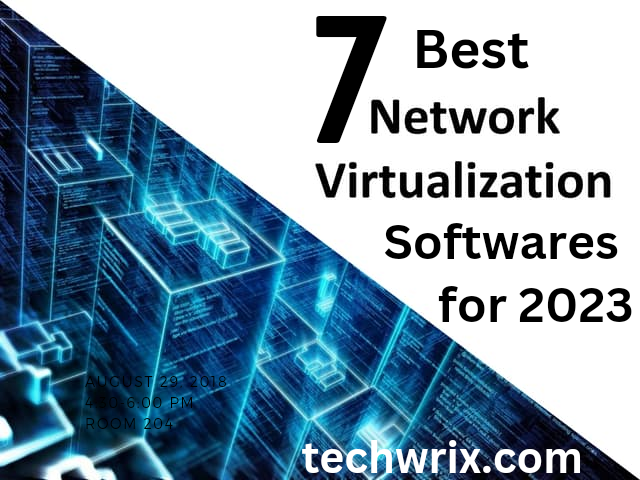Performance and storage are crucial variables to take into account while looking for the finest storage virtualization solution. VMware vSAN, Nutanix Cloud Infrastructure (NCI), Azure Stack HCI, DataCore Software-Defined Storage, and Red Hat Gluster Server are among the top 10 storage virtualization solutions we have identified for 2023.
In this article, we’ll discuss the top 10 storage virtualization solutions including their features, benefits, pros, cons, and pricing.
1. Nutanix Cloud Infrastructure
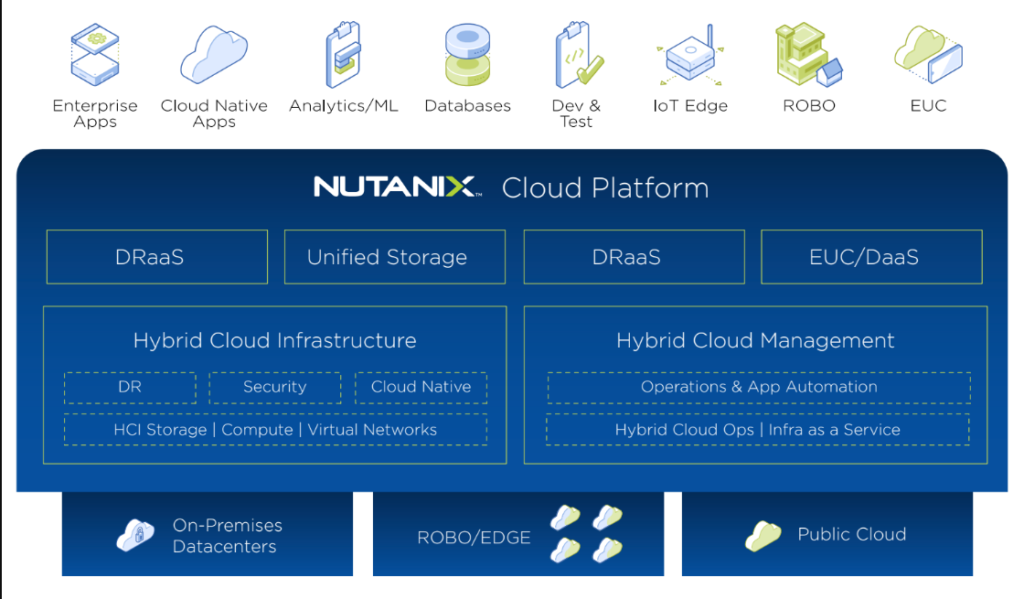
Nutanix Acropolis is a full-service delivery platform for all infrastructure services and comprises the following essential components:
Built-in AHV: Virtualization Nutanix AHV is a comprehensive enterprise virtualization solution tightly integrated into Acropolis and is offered at no additional license cost. Nutanix AHV is a native virtualization solution and additionally supports the virtualization solutions of VMware ESXi and Microsoft Hyper-V. The features needed to execute enterprise applications are provided by AHV.
Platform Services: Nutanix Acropolis offers a full array of software-defined platform services so that IT organizations can centrally manage all of their workloads and consolidate them on the Nutanix platform.
Enterprise Storage Capabilities: Nutanix offers a distributed storage fabric that gives all kinds of applications access to enterprise-class storage services, including deduplication, compression, encryption, erasure coding, and more. Also, data locality guarantees the quickest speed.
Networking Services: Nutanix Acropolis offers a full range of services to automate routine network operations, visualize the network and network performance, and secure applications with native micro-segmentation.
More than 40% of Global 2000 firms use Nutanix software to power their applications of any size. The enterprise cloud is the future of IT. It’s time for corporations to use web-scale technology to update their data centers. For more efficiency, do away with pricey virtualization and standalone SAN or NAS-based storage, and dismantle IT silos for improved agility. Any application, at any scale, in almost any cloud may be operated on Nutanix.
Nutanix Cloud Infrastructure (NCI) Features
In each of the aforementioned areas, Nutanix Cloud Infrastructure (NCI) provides its clients with various capabilities and resources. The functionalities that are now accessible to users include:
• High-performance: This group of technologies uses hardware innovations like NVMe and RDMA to consistently accelerate users’ most demanding workloads. To produce good outcomes, the tools in this feature category operate with data locality.
• Impervious resilience: These Nutanix Cloud Infrastructure capabilities safeguard data and maintain accessibility by enabling cutting-edge distributed consistency algorithms. These capabilities can be used by users to safeguard their data against problems like bit rot, hardware malfunctions, and even complete site failure.
• Flexibility: This combination of characteristics enables storage to be quickly and readily adjusted to each business’s needs in order to accommodate the growth of the organization and its data. Instead of being constrained by hardware, the capabilities give users the freedom to logically apply storage policies prior to workloads.
• Hypervisor selection: Customers have an option between Microsoft Hyper-V and VMware ESXi, two of the most popular hypervisors. Moreover, they can benefit from the built-in hypervisor AHV offered by Nutanix Cloud Infrastructure (NCI).
• Integrated virtualization: These options provide streamlined AHV operations and efficient automation. These services are designed for excellent performance and dependability.
• Kubernetes: Nutanix Cloud Infrastructure (NCI) features allow for the development and deployment of cloud-native applications on a distributed, intelligent infrastructure. Applications can be connected with cloud-compatible storage, and the same platform can be used for both development and deployment.
• Microsegmentation: Using machine learning, Nutanix Cloud Infrastructure (NCI) provides tools to stop the spread of malware and minimize attack surfaces (ML).
• Network virtualization: With the help of this collection of features, customers may quickly add many tenants to their environment or extend networks across clouds.
• Centralized network management: Organizations can manage networking configurations centrally using Nutanix Cloud Infrastructure (NCI). With straightforward virtual switch management, users can use it throughout their human-computer interaction (HCI) environment.
Nutanix Cloud Infrastructure (NCI) Benefits
As users make use of the product’s capabilities, they receive a variety of benefits. A few of these are:
• NCI controls the spread of technology and frees up technical resources so that companies may concentrate on other tasks, potentially cutting costs for the company.
• The software enables users to grow, deploy, and connect to the public cloud so they can respond to changing business situations.
• Nutanix Cloud Infrastructure increases data accessibility while also safeguarding it from various failures and intrusions.
• The system provides resilient distributed storage with outstanding performance for all workloads.
• By integrating with the Nutanix Cloud Platform, NCI provides straightforward data administration from a single console.
• The Nutanix Cloud Infrastructure adheres to the zero trust principle and uses specially created security mechanisms to safeguard users’ apps and data.
Nutanix Cloud Infrastructure (NCI) Pricing
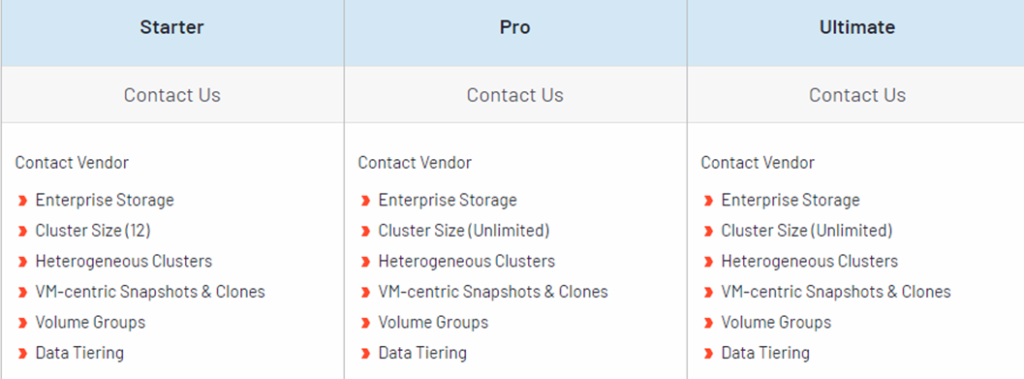
2. VMware vSAN
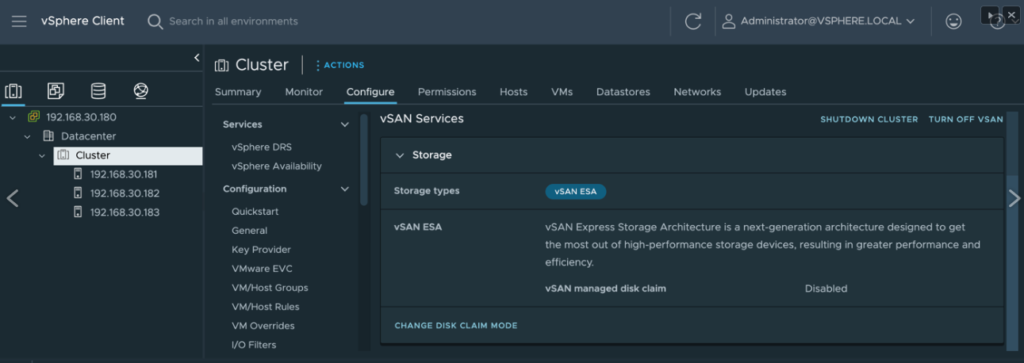
Hyper-converged infrastructure solutions powered by VMware vSAN, a software-defined corporate storage solution, are the best in the business.
At VMware, we think that technology has the potential to open up new opportunities for both people and the environment. They design new approaches to integrating technologies in a smooth manner by seeing past compromise obstacles. Our offerings in compute, cloud, mobile, networking, and security create the digital foundation for the services, experiences, and apps that are reshaping the world.
VMware vSAN Features and Benefits
The following are some of the characteristics and advantages of VMware vSAN, while the feature set varies based on the license type:
• Management based on storage policy, the automated administration of storage profiles is made possible by this functionality. Data at rest is protected from unauthorized access by checksum and encryption: Also encrypted are the vSAN data stores. These data stores have access to all VM files and utilize storage from every ESXi host in a cluster. Clusters that are stretched, these clusters enable several server virtualization hosts in the same configuration, increasing security and availability.
• All-flash configuration services, deduplication, compression, and erasure coding data services are supported for all-flash configurations by advanced and enterprise licenses.
• Storage quality of service (QoS) is supported by all vSAN licenses, allowing administrators to set a cap on how many input/output operations per second (IOPS) a given VM can use.
• Can be installed on x86 servers where every industry-standard server can take advantage of vSAN.
• Based on application needs, flexible compute and storage is offered.
VMware vSAN Pricing
You can refer to the VMware vSAN licensing guide for licensing and pricing.
3. StarWind Virtual SAN

As a leader in hyper-convergence and storage virtualization, StarWind provides bespoke SDS and turnkey (software+hardware) solutions that optimize the utilization of underlying storage capacity, assure fault tolerance, create resilient IT infrastructure, and boost client ROI. With more than 150 people, StarWind serves more than 400,000 clients globally.By mirroring internal hard discs and flash between hypervisor servers, StarWind Virtual SAN (VSAN) completely does away with the requirement for physical storage. StarWind VSAN can be installed on or integrated into any current IT infrastructure because of its special features. You may acquire a reliable, fault-tolerant storage pool, consistent application up-time, and limitless scalability with just 2 nodes by purchasing a single solution.
StarWind Virtual SAN Features
High Availability: StarWind Virtual SAN provides continuous availability by replicating data between multiple storage nodes, ensuring that data is always accessible.
Scalability: It allows users to scale storage capacity and performance by adding new nodes to the storage cluster.
Cost-Effective: The solution leverages existing hardware and allows users to add storage capacity as needed, eliminating the need for expensive hardware upgrades.
Easy to Use: StarWind Virtual SAN provides an intuitive web-based interface for managing storage resources and configuring high availability.
Support for multiple hypervisors: The solution supports multiple hypervisors, including VMware, Hyper-V, and KVM, making it flexible and compatible with a wide range of virtual environments.
Pros
High availability: StarWind Virtual SAN ensures that data is always available, even in the event of a hardware failure.
Scalability: It allows users to scale storage capacity and performance by adding new nodes to the storage cluster, making it a cost-effective solution for growing businesses.
Compatibility: The solution supports multiple hypervisors, making it flexible and compatible with a wide range of virtual environments.
Easy to Use: The intuitive web-based interface makes it easy to manage storage resources and configure high availability.
Cost-effective: StarWind Virtual SAN leverages existing hardware, eliminating the need for expensive hardware upgrades.
Cons
Complexity: The solution requires a certain level of technical expertise to set up and configure.
Single point of failure: StarWind Virtual SAN relies on a network connection between nodes, so a network failure could cause the entire storage system to fail.
Hardware requirements: The solution requires a minimum of two servers to create a storage cluster, which may not be feasible for some businesses with limited resources.
Overall, StarWind Virtual SAN is a robust SDS solution that provides high availability, scalability, and flexibility. However, it does require a certain level of technical expertise to set up and configure, and businesses should carefully consider their hardware requirements before implementing the solution.
StarWind Virtual SAN Pricing
You can refer to StarWind Virtual Pricing for pricing.
4. Azure Stack HCI
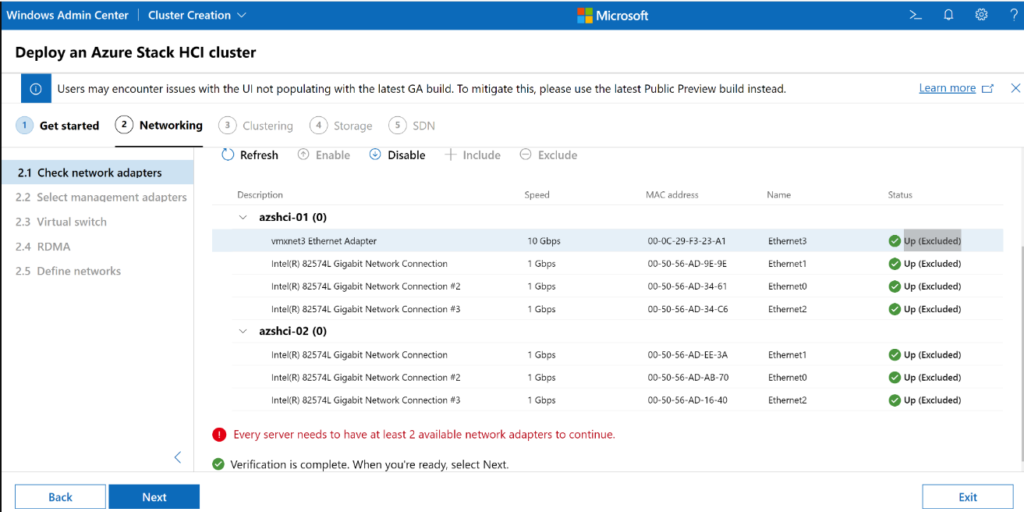
The Azure Stack HCI is a collection of solutions that expands Azure services and capabilities to your preferred environment, including edge locations, remote offices, and data centers. The portfolio makes it possible to develop, deploy, and execute hybrid and edge computing applications reliably across geographic boundaries, giving you the choice and flexibility to handle your various workloads.
Azure Stack HCI Features
Integration with Azure: Azure Stack HCI can be integrated with Azure services such as Azure Backup, Azure Site Recovery, Azure Monitor, and Azure Update Management.
Hyper-converged infrastructure: Azure Stack HCI uses hyper-converged infrastructure to provide a scalable, software-defined solution that combines compute, storage, and networking in a single cluster.
Windows Server Software-Defined (WSSD) program: Azure Stack HCI is built on the Windows Server Software-Defined (WSSD) program, which provides a validated hardware and software solution that is optimized for HCI workloads.
High availability and resiliency: Azure Stack HCI provides high availability and resiliency features such as storage spaces direct, fail-over clustering, and stretch clustering.
Hybrid cloud connectivity: Azure Stack HCI can connect to Azure for hybrid cloud scenarios, allowing organizations to move workloads between on-premises and cloud environments.
Pros
Familiarity: Azure Stack HCI is built on Windows Server, which is a familiar operating system for many IT professionals.
Scalability: Azure Stack HCI provides a scalable solution that can be easily expanded by adding nodes to the cluster.
Simplified management: Azure Stack HCI provides a centralized management interface for managing the entire HCI cluster.
Cost savings: Azure Stack HCI can reduce costs by consolidating workloads onto a single platform and providing a more efficient infrastructure.
Security: Azure Stack HCI provides built-in security features such as Shielded VMs, which can help protect against threats.
Cons
Limited hardware compatibility: Azure Stack HCI requires specific hardware configurations that are validated through the WSSD program.
Complexity: Setting up and managing an Azure Stack HCI cluster can be complex and may require specialized skills.
Cost: Azure Stack HCI requires hardware and licensing costs, which can be expensive for smaller organizations.
Dependency on Azure: While Azure Stack HCI can connect to Azure for hybrid cloud scenarios, it may require organizations to have a strong dependency on Azure services.
Azure Stack HCI Pricing
You can refer to Azure Stack HCI Pricing.
5. DataCore Software-Defined Storage

Organizations can efficiently integrate isolated diverse storage systems into one highly available storage services pool with the help of DataCore SANsymphony software-defined storage (SDS), which offers them the flexibility, performance, and simplicity they want. By enabling any combination of hyper-converged, converged (SAN), and storage virtualization deployment models, DataCore SANsymphony improves your organization’s agility and competitiveness while reducing the business risks, IT complexities, and costs related to various architectures, data migration initiatives, and protocols. Organizations are released from vendor lock-in thanks to DataCore’s hardware-agnostic approach, which also offers the utmost flexibility in how they manage, construct, and modernize their storage infrastructures.
DataCore Software-Defined Storage Features
Centralized storage management: DataCore SDS provides a single management interface for all storage devices in the environment, regardless of vendor or type.
Automated data tiering: The software automatically moves data between different storage tiers based on usage patterns and policies, to optimize performance and cost.
Data protection: DataCore SDS includes features such as snapshots, replication, and backup to protect data against loss or corruption.
High availability: The solution includes synchronous and asynchronous mirroring, automatic failover, and load balancing to ensure continuous access to data.
Performance acceleration: DataCore SDS includes features such as caching, parallel I/O, and compression to accelerate application performance.
Pros
Simplified storage management: DataCore SDS eliminates the need for multiple storage management tools and provides a single, unified view of all storage resources.
Improved performance: By optimizing data placement and accelerating I/O, DataCore SDS can improve application performance and reduce latency.
Cost savings: By automating data tiering and optimizing storage utilization, DataCore SDS can reduce the need for expensive high-performance storage.
Flexibility: DataCore SDS supports a wide range of storage devices and can be deployed on-premises or in the cloud, providing flexibility and scalability.
Data protection: DataCore SDS includes features such as snapshots and replication, which can protect data against loss or corruption.
Cons
Complexity: DataCore SDS can be complex to deploy and configure, and may require specialized skills and knowledge.
Cost: DataCore SDS is a commercial solution that may be more expensive than some open-source alternatives.
Vendor lock-in: DataCore SDS is a proprietary solution that may tie customers to a particular vendor and limit their ability to switch to other solutions.
Overall, DataCore SDS provides a powerful and flexible solution for managing heterogeneous storage environments, with features that can improve performance, reduce costs, and protect data. However, it may be more complex and expensive than some other solutions and may tie customers to a particular vendor.
DataCore Software-Defined Storage Pricing
Refer to DataCore SANsymphanoy licensing and pricing.
6. Red Hat Gluster Server (formerly Storage Server)

You can control exponential data expansion at a fraction of the price of other storage systems with Red Hat‘s open-source scale-out network-attached storage solution.
Red Hat Gluster Server (formerly Storage Server) Features
Scalability: Red Hat Gluster Server allows you to easily scale storage capacity and performance as your needs grow, by simply adding more nodes to the cluster.
High availability: With built-in replication and self-healing capabilities, Red Hat Gluster Server ensures that data is always available, even in the event of hardware or software failures.
Data protection: Data can be protected with features such as geo-replication, which allows you to create copies of data across multiple locations, and snapshot-based backups.
Easy management: Red Hat Gluster Server provides a web-based management console, CLI, and API, making it easy to manage and monitor your storage infrastructure.
Pros
High performance: Red Hat Gluster Server is designed to provide high-performance storage for demanding workloads, such as big data analytics, media streaming, and content delivery.
Scalable: As mentioned earlier, the system is easily scalable as more nodes can be added to the cluster, making it easy to handle growing data volumes.
Easy management: The web-based management console, CLI, and API provided by Red Hat Gluster Server makes it easy for administrators to manage and monitor the storage infrastructure.
Flexibility: Red Hat Gluster Server can be deployed in a variety of configurations, including on-premises, in the cloud, or in hybrid environments.
Cons
Complexity: Red Hat Gluster Server can be complex to set up and configure, especially for organizations without a lot of experience in distributed storage systems.
Hardware requirements: Red Hat Gluster Server requires specialized hardware, including fast interconnects and high-performance storage devices, which can be expensive.
Limited protocol support: Red Hat Gluster Server only supports a limited set of protocols, which may not be suitable for all use cases.
Performance impact: The self-healing and replication features of the Red Hat Gluster Server can have a performance impact on the storage system, especially during periods of high utilization.
Red Hat Gluster Server (formerly Storage Server) Pricing
Check Red Hat Gluster Server Support for pricing.
7. VxRail

VxRail substantially streamlines IT processes, speeds up time to market, and offers a phenomenal return on investment as the only fully integrated, pre-configured, and pretested VMware hyper-converged infrastructure appliance family on the market.
VxRail Features
VxRail is built on VMware’s vSphere hypervisor and vSAN storage, which makes it highly scalable and flexible.
It is designed for easy deployment and management, with a simple user interface and automation capabilities.
VxRail provides enterprise-level data protection and disaster recovery capabilities, including backup, replication, and failover.
It supports a wide range of applications and workloads, including virtual desktop infrastructure (VDI), databases, and big data analytics.
Pros
VxRail simplifies IT operations by combining compute, storage, and networking into a single system, reducing the need for separate infrastructure components and minimizing complexity.
It offers high performance and scalability, with the ability to add nodes as needed to meet growing demand.
VxRail provides enterprise-level reliability and availability, with features such as automatic failover and non-disruptive upgrades.
It is backed by Dell EMC and VMware’s support and expertise, ensuring a high level of service and support for customers.
Cons
VxRail can be more expensive than traditional infrastructure solutions, especially for smaller deployments.
It may require specialized expertise to set up and manage, which could be a challenge for organizations with limited IT resources.
VxRail is tightly integrated with VMware’s software stack, which could limit flexibility for organizations that prefer to use other virtualization platforms or storage solutions.
Upgrades and maintenance could require downtime, which could impact business operations.
Overall, VxRail is a powerful HCI solution that can simplify IT operations and provide high performance, scalability, and reliability. However, it may not be the best fit for all organizations, especially those with limited resources or specific IT requirements.
VxRail Pricing
Refer to Dell VxRail Pricing.
8. NetApp Cloud Volumes ONTAP

NetApp Cloud Volumes ONTAP, the industry’s top enterprise-grade cloud storage management solution, offers safe, time-tested storage management services and supports up to 368TB of capacity. Many use cases are supported by software services, including File shares and block-level storage providing NAS (NFS, SMB/CIFS) and SAN (iSCSI); Disaster Recovery, Backup, and Archive; DevOps Databases; and so forth (SQL, Oracle, NoSQL). Both a basic single-node configuration and a High Availability (HA) configuration are available for NetApp Cloud Volumes ONTAP.
NetApp Cloud Volumes ONTAP Features
Data protection and disaster recovery: NetApp Cloud Volumes ONTAP provides features like data replication, snapshot, and backup and recovery to protect your data against data loss.
Multi-Cloud Support: It supports multiple cloud platforms including AWS, Azure, and Google Cloud, so you can easily migrate and manage your data across different cloud environments.
Cost-effective: NetApp Cloud Volumes ONTAP offers a pay-as-you-go pricing model, which means you only pay for what you use. This can help you save money on storage costs.
High availability: NetApp Cloud Volumes ONTAP provides high availability and redundancy for your data, ensuring that it is always accessible when you need it.
Advanced storage management: It provides features like thin provisioning, data compression, and deduplication, which help you optimize your storage usage and reduce costs.
Pros
Flexibility: NetApp Cloud Volumes ONTAP provides the flexibility to manage and migrate data across different cloud platforms, making it a great option for businesses with multiple cloud environments.
Scalability: The solution can easily scale up or down based on your needs, allowing you to add or remove storage capacity as needed.
Data protection: NetApp Cloud Volumes ONTAP provides advanced data protection features that can help protect against data loss and ensure the high availability of your data.
Cost-effective: The pay-as-you-go pricing model can help businesses save money on storage costs.
Advanced storage management: The solution provides advanced storage management features that can help optimize storage usage and reduce costs.
Cons
Complexity: NetApp Cloud Volumes ONTAP can be complex to set up and configure, which may require specialized skills.
Cost: While the pay-as-you-go pricing model can be cost-effective, some businesses may find the solution to be more expensive compared to other cloud storage options.
Reliance on cloud providers: NetApp Cloud Volumes ONTAP relies on cloud providers like AWS, Azure, and Google Cloud, which may lead to potential issues if there are problems with the cloud providers’ services.
Performance: The solution may not provide the same level of performance as on-premise storage solutions, particularly for high-performance workloads.
Overall, NetApp Cloud Volumes ONTAP provides a range of advanced features and benefits for businesses that require flexible and scalable cloud storage solutions. However, the solution may not be suitable for all businesses due to its complexity and potential cost implications.
NetApp Cloud Volumes ONTAP Pricing
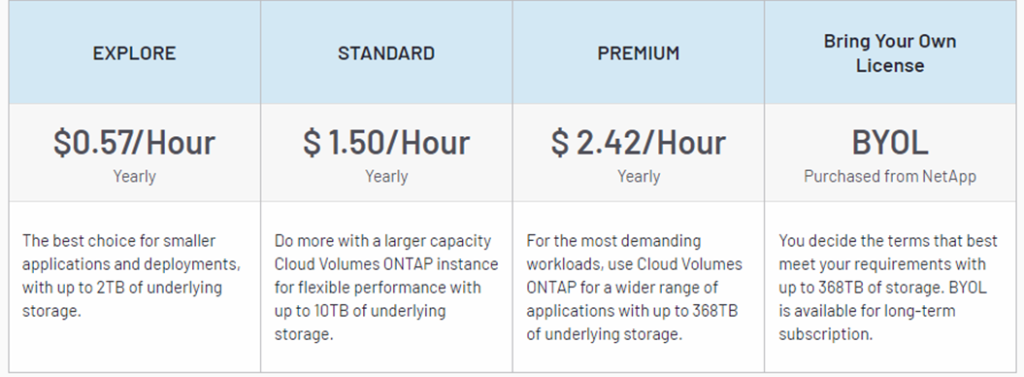
9. Cisco HyperFlex

Extending the ease of multi-cloud and edge hyper-convergence. It is exceptional because it offers the best hybrid cloud, enabling cloud, multi-cloud, and zero-touch installation solutions. Central access to multi-node clusters is possible from anywhere in the world. Fast provisioning, cloning, disaster recovery protection, replication, and Cisco Hyperflex can unify data management, streamline daily operations, and speed up disaster recovery.
Cisco HyperFlex Features
Simplified management: HyperFlex provides a single management interface for computing, storage, and networking resources, making it easier to manage and monitor the entire infrastructure.
Scalability: HyperFlex can scale out by adding nodes to the cluster, allowing organizations to grow their infrastructure as needed.
Data protection: HyperFlex provides built-in data protection features such as backup, replication, and disaster recovery, ensuring that data is safe and available.
Flexibility: HyperFlex supports a wide range of applications and workloads, including virtual desktop infrastructure (VDI), databases, and virtual machines (VMs).
Integration with other Cisco products: HyperFlex integrates with other Cisco products such as UCS Manager and Intersight for improved management and automation.
Pros
Simplified management: HyperFlex’s single management interface makes it easier for IT teams to manage and monitor their infrastructure.
Cost savings: HyperFlex’s HCI architecture can reduce infrastructure costs by eliminating the need for separate compute, storage, and networking systems.
Scalability: HyperFlex’s ability to scale out by adding nodes makes it easy for organizations to grow their infrastructure as needed.
Data protection: HyperFlex’s built-in data protection features provide organizations with peace of mind that their data is safe and available.
Flexibility: HyperFlex supports a wide range of applications and workloads, making it a versatile solution for organizations.
Cons
Vendor lock-in: HyperFlex is a proprietary solution that requires organizations to use Cisco hardware and software.
Cost: While HyperFlex can provide cost savings over traditional infrastructure, it can still be more expensive than other HCI solutions.
Complexity: HyperFlex’s integration with other Cisco products can add complexity to the infrastructure, requiring IT teams to have specialized skills.
Limited support for third-party software: HyperFlex may not support all third-party software, limiting its flexibility for some organizations.
Performance: While HyperFlex provides good performance for most workloads, it may not be the best solution for high-performance computing (HPC) applications.
Cisco HyperFlex Pricing
Refer to Cisco HyperFlex Chat for the pricing of this product or service.
10. AWS Storage Gateway

In order to enable seamless and secure connectivity between an organization’s on-premises IT environment and AWS’s storage infrastructure, AWS Storage Gateway is a service that links an on-premises software appliance with cloud-based storage.
AWS Storage Gateway Features
File Gateway: This feature allows you to store and retrieve objects in Amazon S3, and access them using standard file protocols such as NFS, SMB, and FTP.
Volume Gateway: It offers two configurations: a cached volume gateway, which allows you to store your data in S3 while retaining a copy of frequently accessed data on-premises for low-latency access, and a stored volume gateway, which allows you to store your primary data on-premises while asynchronously backing up data to AWS.
Tape Gateway: This feature provides a virtual tape library (VTL) interface for backup applications to archive data to AWS, reducing the need for physical tape infrastructure.
Pros
Hybrid storage: With AWS Storage Gateway, you can easily store your data in AWS without having to migrate all of your on-premises data to the cloud.
Cost-effective: It provides cost-effective storage for your on-premises applications by eliminating the need for additional hardware or physical tapes.
Scalability: It enables you to scale your storage capacity as needed by simply adding more resources in AWS.
Cons
Latency: The latency of data transfer between on-premises and AWS can be an issue in some cases, especially for large data sets.
Network connectivity: AWS Storage Gateway requires a stable network connection between your on-premises infrastructure and AWS, which can be a challenge for some organizations.
Complexity: Setting up and managing AWS Storage Gateway can be complex and require technical expertise.
Overall, AWS Storage Gateway can be a great solution for hybrid storage scenarios, providing cost-effective and scalable storage options for on-premises applications. However, it is important to consider the potential drawbacks, such as latency and complexity, before implementing it in your organization.
AWS Storage Gateway Pricing
Check AWS Storage Gateway Pricing and Estimate for licensing and pricing.
Top 10 Storage Virtualization Solutions: Conclusion
In conclusion, storage virtualization solutions continue to evolve and improve, offering businesses a wide range of options to meet their storage needs. In 2023, the top 10 storage virtualization solutions include VMware vSAN, Azure Stack HCI, Nutanix Cloud infrastructure, StarWind Virtual SAN etc.
Each of these solutions offers unique features and benefits, allowing businesses to choose the one that best fits their requirements, budget, and preferences. With the increasing demand for storage virtualization solutions, it is expected that these technologies will continue to advance and transform the way businesses store and manage their data


